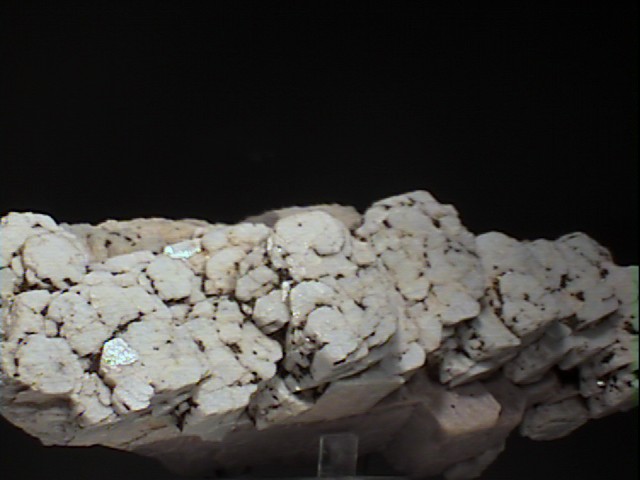
ORTHOCLASE
Specimen ort-11
$ 30.00
Dims: 5.97x1.98x1.62" (15.16x5.02x4.12cm)
Wt: 10.19oz (288.5g)
Dona Ana County, New Mexico, USA
This is a rather pleasing specimen of a mineral that is often boring. It is a cluster of stacked translucent white orthoclase crystals, and additional minerals line the cracks and crevices, especially between the crystals, providing a nice contrast. The crystals also have a pitted surface, which dulls their otherwise vitreous luster.
 Amethyst Galleries' Mineral Gallery MINERALS |
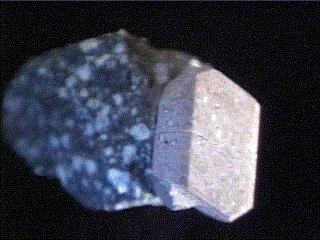
ORTHOCLASE specimen ort-1
$ 15.00
$ 15.00
Dims: 3-1/8" x 2-1/4" x 2-3/4"
Wt: 8.9 oz
unknown
This almost perfect specimen of Orthoclase boasts one large penetration twin measuring 1-1/2 inches by 1 inch by 3/4 inch. It is exceptionally clean, with a tiny amount of surface damage and a large crack running straight across it. It appears to have been broken off and then reglued to the matrix, which looks to be a pegmatitic syenite that contains a small visible crystal and a smaller black, hexagonal section of an unknown crystal.

ort-1 ($ 15.00)
unknown
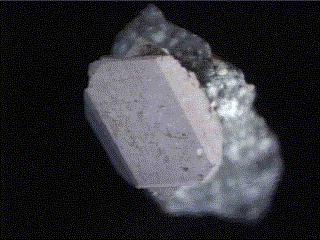
ORTHOCLASE specimen ort-2
$ 17.00
$ 17.00
Dims: 3" x 1-3/4" x 2-1/2"
Wt: 6.8 oz
unknown
I haven't come across many Orthoclase crystals that looked as good as this one. It is a classic penetration twin measuring 1-5/8 inches by 1-1/8 inches by 1 inch, with very clean sides and minimal damage. Actually, most of the detectable damage is due to the crystal being broken out of the matrix and then glued back into position. The matrix seems to be made of a pegmatitic syenite that contains a few small visible crystals. It's a lovely crystal specimen.

ort-2 ($ 17.00)
unknown
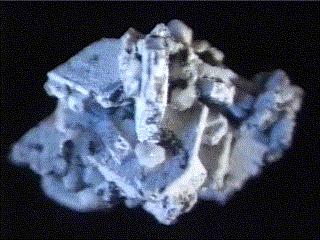
ORTHOCLASE specimen ort-3
$ 25.00
$ 25.00
Dims: 2-1/2" x 2" x 1-1/2"
Wt: 2.4 oz
3M Quarry, Little Rock, Arkansas, U.S.A.
How do explain this piece? There is a lot of different stuff in this specimen! There are several almost tabular prisms of Orthoclase on this specimen, all joined together through interpenetration. They are rather rough in appearance and some of them are damaged, but they are redeemed by the minerals that are attached to them. These include splendid crystals of analcime, tiny needles of sphene(shown in the close-up with an analcime "glob" right behind it) and books of biotite, and a pervasive crust of chlorite. All of these minerals occur in small but excellent crystals... All for a measly $25!
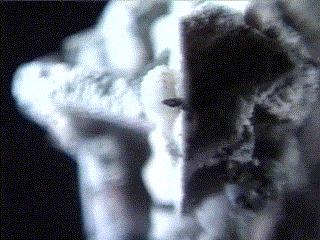

ort-3 ($ 25.00)
3M Quarry, Little Rock, Arkansas, U.S.A.
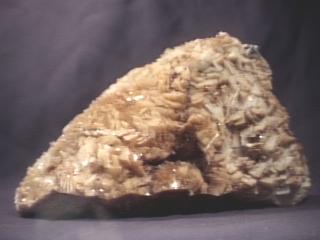
ORTHOCLASE specimen ort-4
$ 45.00
$ 45.00
Dims: 8.7" x 4.9" x 3.9" (22.1 x 12.4 x 9.9 cm)
Wt: 4 lbs., 12.7 oz. (2.174 kg)
Valencia Mine, Guanajuato, Mexico
This very large Orthoclase specimen is an example of a variety known as Valencianite, named after the locality whence it was found. It consists of a large chunk of material that is made up of hundreds of intergrown crystals. Though none of these crystals are complete and separate, enough of each crystal is visible to determine their monoclinic form, though some appear to be almost rhombohedral. There are a few small areas of damage, but most are in excellent condition. The crystals' color is normally a pale cream, but most of this specimen has been heavily rust-stained. The crystals are basically opaque and have a rather bright, pearly luster even with the rust-staining. Oddly, they also show a subtle, colorful iridescence that may have something to do with the rust-staining, as that seems to be where it is most intense. Scattered on top of these Orthoclase crystals are hundreds and hundreds of tiny prismatic quartz crystals. These do not exceed 0.3" (8 mm), and though they would normally be colorless and clear, many of them are also rust-stained. Some of these are incredibly small (1 mm long or less), and a loupe is needed to really see them clearly. There is one portion of the specimen that is so heavily crowded with quartz crystals that none of the Orthoclase is visible. It is one of the oddest feldspar specimens that I have written about. There are a few patches of a dark host rock on the specimen's underside that have a definitely metamorphic appearance. A person who browses our site has made the suggestion that its locality name should not be used, as it is old and not conducive to accurate mineralogical nomenclature.
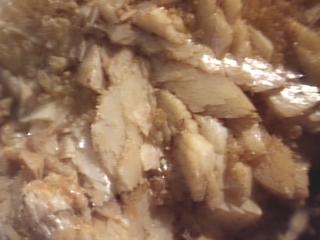

ort-4 ($ 45.00)
Valencia Mine, Guanajuato, Mexico
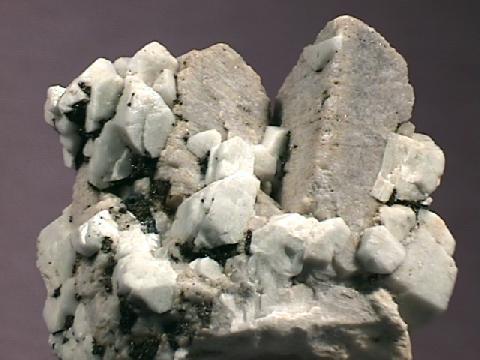
ORTHOCLASE specimen ort-5
$ 55.00
$ 55.00
Dims: 1.9 x 1.5 x 1.0" (4.8 x 3.8 x 2.5 cm)
Wt: 1.60 oz. (45.5 g)
Organ Mountains, Dona Ana County, New Mexico, U.S.A.
This rather interesting specimen consists of a few weathered and intergrown Orthoclase crystals that are surrounded by and partly intergrown with dozens of smaller albite crystals. All but two of the Orthoclases are almost completely enveloped by the albites, and are extremely difficult to study. The two visible crystals have maximum dimensions of 1.1 x 0.5 x 0.4" (2.8 x 1.3 x 1.0 cm) and appear to be heavily weathered, though they show no visible damage. The larger one has fair but heavily rounded and worn monoclinic prismatic form, but the smaller crystal's form is defined well enough so that one can see that it is twinned. Both of these have a pale brown coloration and a dull pearly luster on their faces, and grow out of a base that is made up of larger, more heavily intergrown Orthoclase crystals. The albites that surround the Orthoclase crystals have a pale cream coloration and a brighter pearly luster. Though they are heavily intergrown, their triclinic prismatic form is still quite good, with well-defined edges and clean faces. Interestingly, all of them have grown in such a way that they are aligned in a certain direction!
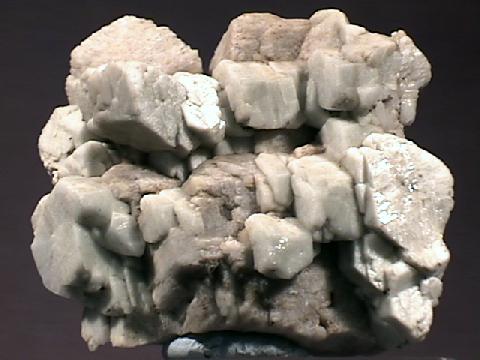

ort-5 ($ 55.00)
Organ Mountains, Dona Ana County, New Mexico, U.S.A.
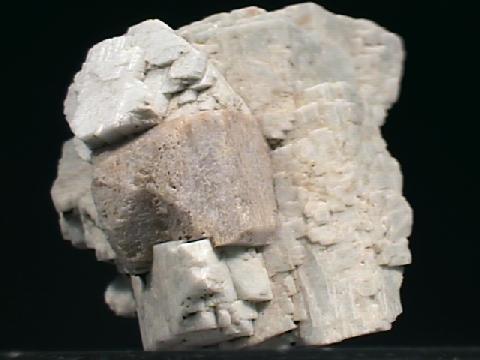
ORTHOCLASE specimen ort-6
$ 65.00
$ 65.00
Dims: 1.6 x 1.8 x 1.4" (4.1 x 4.6 x 3.6 cm)
Wt: 2.13 oz. (60.3 g)
Organ Mountains, Dona Ana County, New Mexico, U.S.A.
This small hand specimen consists of a single Orthoclase crystal growing out of a formation of several heavily-intergrown albites. The Orthoclase is in very good condition, showing only a small amount of damage, and is heavily intergrown with the albite- it has visible dimensions of 0.6 x 0.6 x 0.5", but I think that the crystal is longer, and runs completely through the host. It shows moderately good form, with somewhat rounded edges and weathered but clean faces that possess a dull waxy luster. Though I am unsure, I believe that the Orthoclase crystal is twinned. It has a pale brown coloration that is slightly deeper than that of the pale cream coloration of the albite. The albite crystals are so heavily intergrown that it is difficult to effectively count them. They are in very good condition, showing almost no human-induced damage, and their form is also very good, even with their intergrowth. They have a pearly luster and are opaque, like the Orthoclase.

ort-6 ($ 65.00)
Organ Mountains, Dona Ana County, New Mexico, U.S.A.
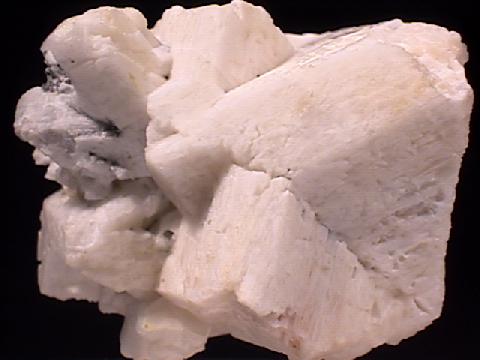
ORTHOCLASE specimen ort-7
$ 48.00
$ 48.00
Dims: 2.3 x 2.2 x 1.7" (5.8 x 5.6 x 4.3 cm)
Wt: 4.01 oz. (113.7 g)
Morro Redondo Mine, Coronel Murta, Minas Gerais, Brazil
This specimen is basically made up of a cluster of several Orthoclase crystals. These crystals are in excellent condition, as only a few of them are noticeably damaged. All have good monoclinic prismatic form, with moderately well-defined edges and patterned but clean faces that possess the standard waxy luster. At least 2 of the largest crystals are twinned, and possibly a third. They are so heavily intergrown that it is difficult to determine their sizes. All have the standard cream coloration of Orthoclase, and are dimly translucent around their edges. There is no host rock present.

ort-7 ($ 48.00)
Morro Redondo Mine, Coronel Murta, Minas Gerais, Brazil
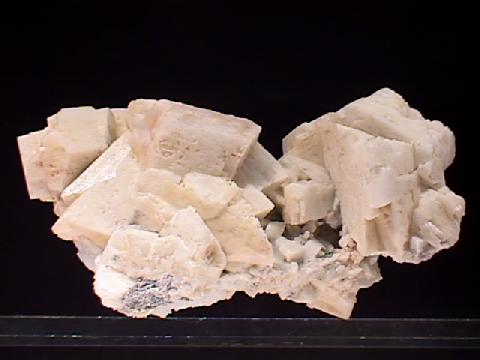
ORTHOCLASE specimen ort-8
$ 90.00
$ 90.00
Dims: 4.4 x 2.5 x 2.3" (11.2 x 6.4 x 5.8 cm)
Wt: 9.95 oz. (282.3 g)
Morro Redondo Mine, Coronel Murta, Minas Gerais, Brazil
At least 8 partly intergrown Orthoclase crystals, most of which are twinned, make up this hand specimen. These twins appear to be primarily contact twins, showing mirror images on each side of the twinning planes. These crystals range in size from a few millimeters along each axis to 1.5 x 1.5 x 0.9" (3.8 x 3.8 x 2.3 cm) and are in good condition, showing only a small amount of damage. Their monoclinic prismatic form is good even though their intense intergrowth interferes- all edges are well-defined and all faces are moderately clean and possess a dull waxy-to-pearly luster. Their color is the pale creamy-white that is standard for this mineral, and though a few may show dim translucence around their edges, they are generally opaque. A small amount

ort-8 ($ 90.00)
Morro Redondo Mine, Coronel Murta, Minas Gerais, Brazil
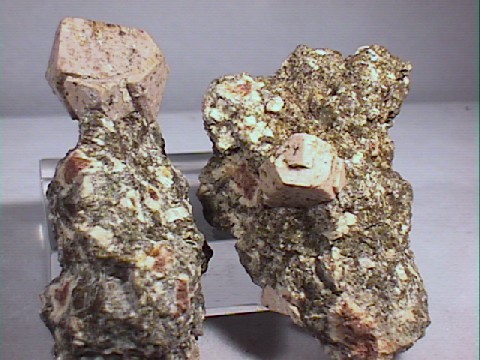
ORTHOCLASE specimen ort-9
$ 25.00
$ 25.00
Dims:1.9x*1.1x0.8" (4.8x2.8x2.0 cm), 2.0x1.2x1.1" (5.1x3.0x2.8 cm)
Wt: 2.2oz. (63g)
Near Carlsbad, New Mexico
Two seperate pieces comprise this specimen. The first piece has a single prismatic crystal 0.6" (1.5cm) in length. This crystal is in excellent shape and displays excellent monoclinic form. It appears that it popped out of the matrix at one time and was repaired with a drop of glue. The repair job was good-it is not obvious. The second piece displays a perfect Carlsbad twin 0.5" (1.3cm) in length. Both of these pieces are on an orthoclase porphry matrix. They are undamaged.

ort-9 ($ 25.00)
Near Carlsbad, New Mexico
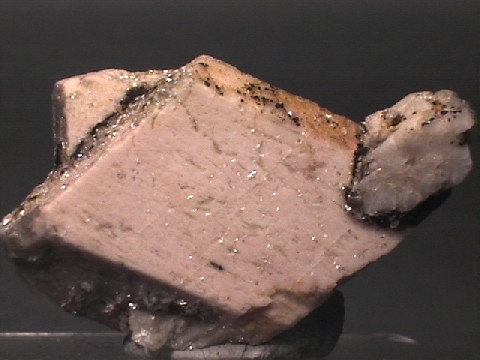
ORTHOCLASE specimen ort-10
$ 28.00
$ 28.00
Dims: 1.3x0.8x0.5" (3.3x2.1x1.3cm)
Wt: 0.36 oz. (10.1g)
Epprechtstein, Fichtelgebirge, Germany
This is a very nice large thumbnail specimen of orthoclase, especially because it is a twinned crystal showing different terminations on the two halves of the twin. It is well formed, has an attached crystal of (I believe) albite, and a dusting of muscovite and other mineral crystals (some clear, some brown, some black). The original specimen labels are included - this is from a very old collection.

ort-10 ($ 28.00)
Epprechtstein, Fichtelgebirge, Germany

ORTHOCLASE specimen ort-11
$ 30.00
$ 30.00
Dims: 5.97x1.98x1.62" (15.16x5.02x4.12cm)
Wt: 10.19oz (288.5g)
Dona Ana County, New Mexico, USA
This is a rather pleasing specimen of a mineral that is often boring. It is a cluster of stacked translucent white orthoclase crystals, and additional minerals line the cracks and crevices, especially between the crystals, providing a nice contrast. The crystals also have a pitted surface, which dulls their otherwise vitreous luster.

ort-11 ($ 30.00)
Dona Ana County, New Mexico, USA